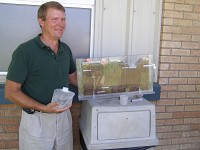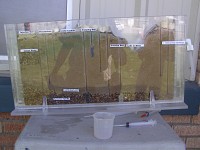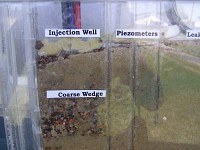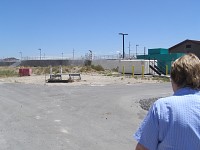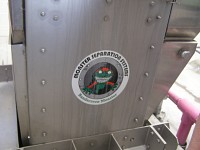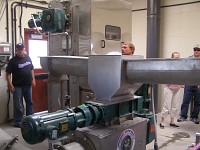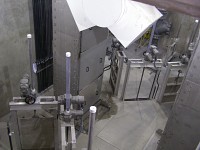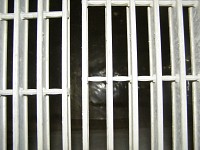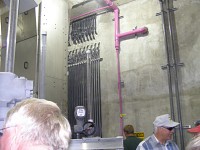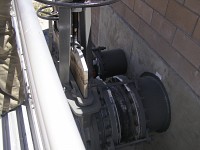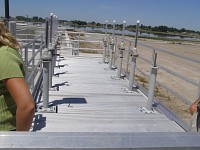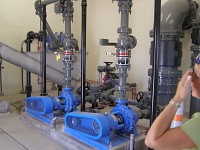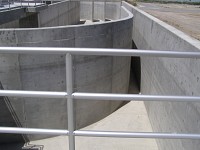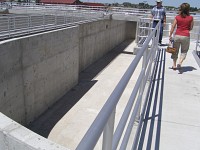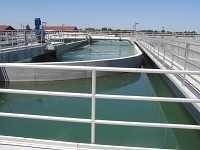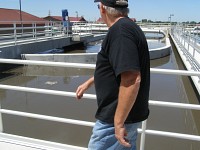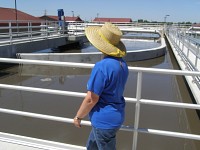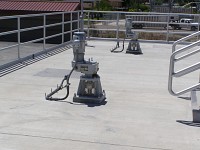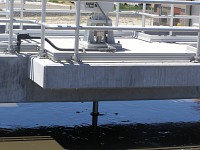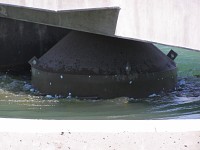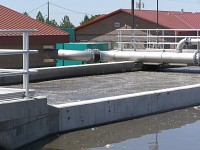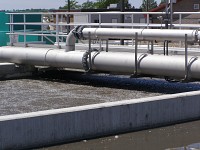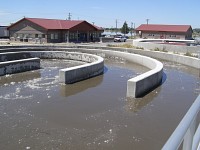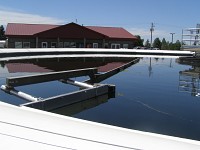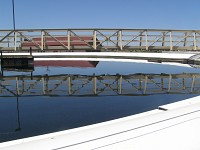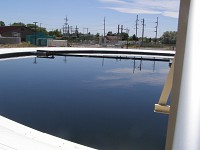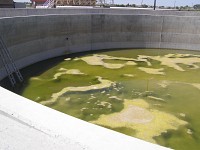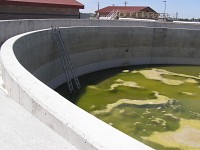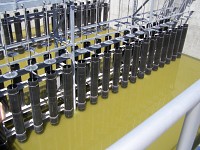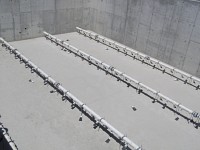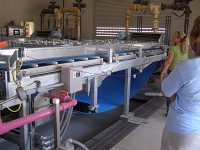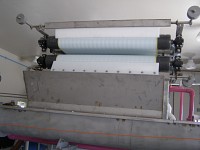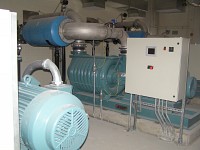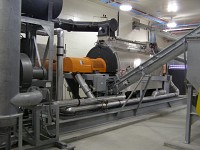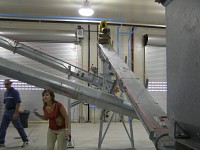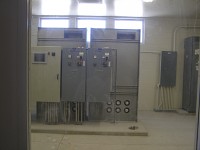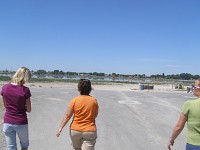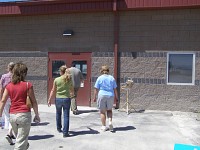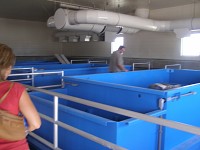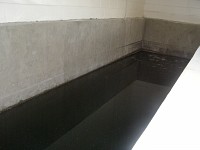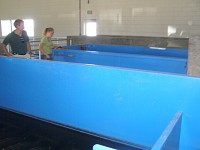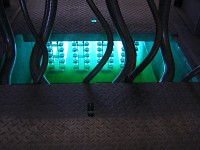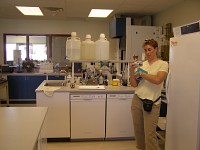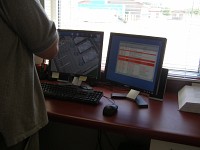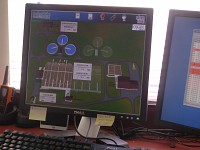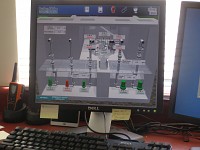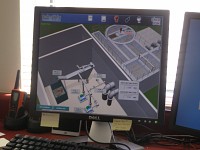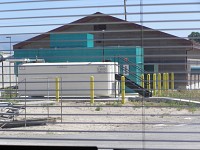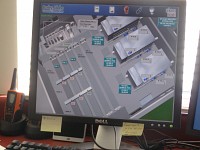Water Class
| This is for our Water Issues class taught by Ross Spackman. The first day of our class we drove the INL. Because no cameras were allowed, I didn't take my camera and then later found out we could have taken them but just had to leave them in the van when going into the reactor buildings so I didn't get any pictures. When we arrived we learned about how nuclear power works as well as lots of facts. INL has over 8000 employees and has over a 1 billion dollar budget. We learned that the average person gets 360 MR (milli rem) per year and a air force pilot gets 1000 mr and a smoker gets 1300 mr a year. 200-300 Rem will cause hair loss and vomiting in half the population, 500 will cause 50% of people to die in 30 days. 1000 Rem will cause everyone to die in 30 days. Time, Distance and Shielding affect radiation exposure. We saw a video about how they test the casks used to ship waste in. After the discussion we went to ATR (Advanced Test Reactor) and were given a tour of the building. The reactor is a low pressure one so it doesn't need a containment dome and is in a simple metal building. It is used to conduct experiments and anyone can rent space in the reactor. The Navy rents most of the space. We saw the large tank where the rods are stored and we saw that some are glowing blue from the radiation interacting with the water to slow the particles so we can see them. We then didn't have enough time to go to another location so we went back to EBR1 and went on the self guided tour and then came home.\ The second day of class we spent in the classroom and discussed water issues in Idaho such as turning off farmers waters. We then conducted an experiment in the first three photos of how water in the aquifer works and how contaminants affect it. We then went to the Burley waste water treatment plant. Burley paid 29 million dollars to build it and is managed by Veolia water. They have a total of 5 workers and only work a regular work day so no one is there at night. The plant handles 1.3 million gallons of water a day right now but can handle twice that right now and if the put the equipment in the other tanks they can handle 5.5 million gallons a day. They built three of every tank and have equipment in two of them, the third has no equipment. The location has enough room to add 5 more tanks of each type for future expansion. Purple pipes are sewer water, blue is clear water. Tanning is used because it is less dangerous than chlorine Click to enlarge photos. |
